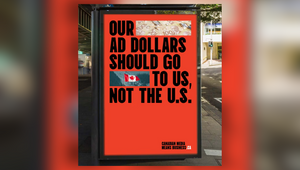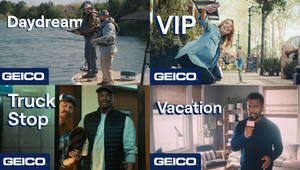
Here's How Taylor And Travis' Relationship Will Impact the NFL This Season

Even the most avid football fan can admit that the NFL is built on a bedrock of advertising opportunities. On average around 25% of NFL broadcasts are commercials, which means during a three hour game viewers spend approximately 45 minutes watching advertisements. And, as the most watched sport in North America (over 123 million people tuned in to watch this year’s Super Bowl LVIII) team sponsorship revenue has now reached an all-time high of $2.3 billion. Football is big, but advertising is bigger – and brands are prepared to pay lucrative prices to be included in the Big Game.
Last week, the Kansas City Chiefs played the Baltimore Ravens in the first NFL game of the 2024 season. While fans of the sport will be closely following the reigning Super Bowl Champions, increased viewership is expected to rise due to the ongoing romance between Taylor Swift and Chiefs quarterback, Travis Kelce.
According to a survey by Adtaxi, nearly 30% of respondents were more likely to follow football last season based on Taylor and Travis’ relationship. As the world speculates how many Chiefs games Taylor Swift will attend in 2024, LBB explores the reasons why these stats are being taken very seriously by marketers in 2024. Sitting down with Will Trowbridge, CEO of LA-based creative agency, Saylor, LBB's April Summers considers what the industry can do to capitalise on this major crossover moment in pop culture.
LBB> Will, tell me, how do you expect the ongoing ‘Tayvis’ craze to translate to this NFL season?
Will> So far, the craze has yet to die down. If anything, it’s gained steam! Nearly 29 million people tuned in to the first Chiefs game of the season (at which Taylor was present) making it the most-watched NFL Kick-Off game of all time. This is clear evidence that the Taylor Swift Effect is still going strong this season… and the reigning champs remain undefeated (at least so far).
LBB> Do you think the NFL should lean in or away from the Swift phenomenon? And what are the possible repercussions?
Will> I think the NFL should lean in while knowing that overdoing it could alienate portions of their dedicated fanbase and risk coming off as ‘thirsty’. But it would be a missed opportunity to not lean into the fun of it all. After all, they don’t need to do much. Taylor’s presence alone is bringing in increased viewership and helping to diversify their fan base. Continuing to highlight her presence on-screen (and on social media) will keep her fans tuning in while also ensuring ample pick-up across media outlets that wouldn’t normally cover football.
LBB> As the CEO of a creative agency that collaborates with global brands such as Netflix, Prime and Walt Disney, what is your advice to marketers and brands who want to capitalise on increased eyes on the NFL?
Will> Marketers should meet fans where they are, teaming up with influencers and athletes that align with their existing fanbases. For the first time ever, people are tuning in to watch football who may have no preexisting knowledge of the sport. This provides a unique opportunity for marketers already in the football space to reach new audiences and vice versa. The Swelce craze won’t last forever, though. So they should already be looking for ways in, before the bubble bursts.
LBB> How can brands use social media to capture sports-centred audiences during the season?
Will> Brands can use social media to capture sports-centred audiences by creating quick-turn reactive content that engages audiences in real-time. Like any sport, football is best experienced live. Whether in person or on social media, fans love to talk about game highlights as they happen. By engaging directly with these fast moving conversations on social media, brands can reach sports-centred audiences directly and centre themselves in the larger football conversation.
LBB> And finally, in your experience, what would you say are the key do’s and don'ts of using athletes in social campaigns?
Will> Social campaigns featuring athletes or talent of any kind should feel as natural as possible. If audiences don’t believe the athlete would endorse your product they won’t engage and might even deem the campaign ‘cringe’ (close to worst-case scenario). To avoid this, brands must think of athletes no different from any other influencer - the more aligned with your brand the better. After all it’s mutually beneficial when the content resonates with your collective fans.















